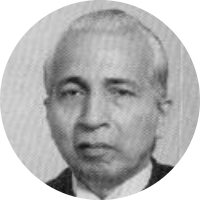Ranganath Mishra

Ranganath Mishra
Former Chief Justice of India
Assumed Office25th Sep, 1990
Retired On24th Nov, 1991
Previously
Member of Parliament in Rajya Sabha 1998-2004
First Chairman of the National Human Rights Commission16th January 1981 - 24 November 1996
Judge of the Supreme CourtMarch 15th 1983 - September 25th 1990
Permanent Chief Justice of the Orissa High CourtJanuary 16th 1981 - March 14th 1983
Permanent Judge of the Orissa High CourtJuly 4th 1969 - January 15th 1981
Profile
Justice Ranganath Misra enrolled as an advocate at the Orissa High Court on September 18th 1950. He practised as a lawyer until 1969 and was then appointed as a Permanent Judge of the Orissa High Court. He was elevated as an acting Chief Justice of the Orissa High Court on November 6th 1980. He then became the permanent Chief Justice on January 16th 1981.
Justice Misra was elevated as a Judge of the Supreme Court on March 15th 1983. He became the 21st Chief Justice of India, staying in office from September 25th 1990 to November 24th 1991.
After his retirement, he became the first Chairman of the National Human Rights Commission. He was also the sole member of Justice Ranganath Misra Commission of Inquiry, which was set up to look into the 1984 anti-Sikh Riots. He became a Member of Parliament in Rajya Sabha from the Congress Party, serving between 1998 and 2004. Due to a prolonged illness, he passed away on September 13th 2012.
During his nine-year tenure at the Supreme Court, he authored 314 judgements and was a part of 821 Benches.
He primarily authored judgements on service (84), constitution (59), and criminal (52) matters.
Notable Judgments
Justice Misra was a part of the five-judge Bench that delivered the settlement order of the Bhopal gas leak case (Union Carbide Corporation v. Union of India and Others) in 1989. The Bench had directed Union Carbide Corporation (UCC) to pay compensation of $470 million as a full and final settlement arising out of claims, rights, and liabilities in the Bhopal Gas Leak Disaster. The Court also disposed of all the past, present, and future civil and/or criminal proceedings. The settlement order was met with huge protests and public outrage because the survivors, victims, activists and supporters wanted to continue with the proceedings against UCC. A five-judge Bench headed by then Chief Justice Ranganath Misra reviewed the settlement order and delivered their judgement on October 3rd 1991. The settlement order was largely upheld, except for the part that quashed the criminal proceedings.
In S.P. Sampath Kumar v. Union of India (1986), Justice Misra was a part of a five-judge Bench that answered two important questions. First, whether taking away the jurisdiction of High Courts under Articles 226 and 227 in service matters by the Administrative Tribunals Act 1985 was unconstitutional. Second, whether the provisions of this Act laying down the procedure for setting up these administrative tribunals were invalid. Justice Misra held that the setting up of Administrative Tribunals which took away the jurisdiction of High Courts was not unconstitutional. This was because if “grave injustice” was done by these tribunals in their decisions, judicial review by the Supreme Court was always available as a right. Further, on the questions of procedure for appointment of Chairman, he directed the Central Government to choose only a person with a judicial background, and not someone from the administrative services.
Justice Misra in Sheela Barse v. Union of India (1986) took major steps to protect the rights of physically or mentally challenged children or abandoned and destitute children, who had been put in jails across the country for “safe custody”. He directed all the State Governments to take immediate action in implementing “Children’s Acts” in their respective States and to make sure that children do not suffer. Further, he strongly suggested the Central Government enact national legislation to ensure social, economic, and psychological welfare/rehabilitation of children.
In 1988, Kehar Singh was convicted of criminal conspiracy and murder of the then Prime Minister of India, Indira Gandhi. He was sentenced to death by the Sessions Court in New Delhi, and the decision was upheld by the Delhi High Court and the Supreme Court. Justice Misra was a part of the five-judge Bench in Kehar Singh v. Union of India, which held that the power of pardon resting with the President of India is a constitutional power, and not a matter of “private act of grace”; it had to be exercised based on the advice of the Central Government. The Court also stated that the President had the discretion to allow for an oral hearing in mercy petition cases.
